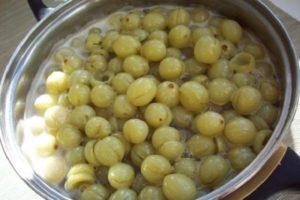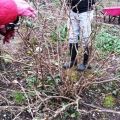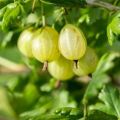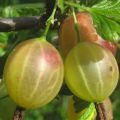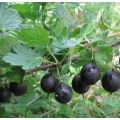Description and characteristics of the Amber gooseberry variety, cultivation and reproduction
The gooseberry is popular with many gardeners. The features of this plant include ease of cultivation, protection from ailments and the taste of the crop. One of the best varieties of such berries is the Amber gooseberry variety.
general information
This plant was obtained in the fifties of the last century by the Soviet breeder M.A.Pavlova. When creating Amber, an English yellow berry variety was used. For several years after its creation, the variety has spread to farms located in Ukraine, Belarus and Russia.
The bushes of the plant grow up to one and a half meters, if properly cared for. Greenish leaves appear on the branches of shrubs in late spring.
Also on the branches there are a small number of pointed thorns, which are colored light brown.
The variety is unpretentious to soils, and therefore it grows well in any conditions. The only place where Yantarny can bear fruit poorly is swampy and oxidized soil with high humidity. The plant is best grown outdoors as it is protected from frost.
Amber belongs to the early ripening varieties of gooseberries, which bear fruit in early summer. With proper care of cultivated shrubs, the yield reaches 10-15 kilograms per bush. Ripe fruits do not rot and can hang on plants for a long time. After ripening, ripe berries turn reddish, the weight of each of them reaches 5-7 grams.
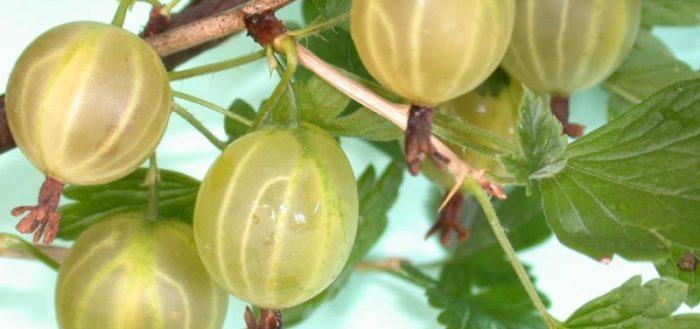
Pros and cons of the Yantarny variety
When studying the description of this berry, be sure to familiarize yourself with its advantages and disadvantages. The main advantages of such a plant include the following:
- Early harvest ripening. Gardeners who grow Amber, note the rapid ripening of the berries. A ripe crop has time to fully ripen until mid-July.
- The speed of fruiting. Some varieties of gooseberries begin to give their first harvest 3-4 years after planting on the site. However, in Yantarny, fruiting begins the next year after planting the seedlings.
- Self-pollination. The shrub is classified as a self-pollinated plant that begins to bear fruit without the use of additional pollinators. This greatly simplifies the cultivation of bushes in greenhouses.
- Productivity.Many gardeners attribute Amber to a high-yielding berry species, since it is possible to get about 30 kilograms of harvest from several bushes.
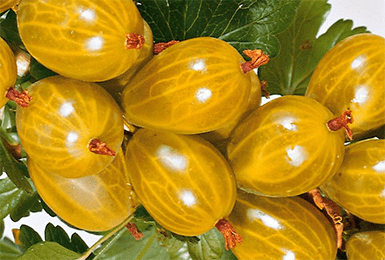
However, the berry also has disadvantages that everyone who plans to grow gooseberries should familiarize themselves with:
- Huge thorns on the stems. The branches of Amber are covered with powerful sharp thorns, which make it difficult to harvest a ripe crop and prune.
- Cracking berries. If the bushes are grown in high humidity conditions, the peel of ripe berries will begin to crack.
How to grow gooseberries
Before you start planting Yantarny, you need to familiarize yourself with the main features of growing this variety.

Seat selection
To get a lot of delicious berries, you need to find the most suitable place for growing gooseberries. This plant is recommended to be cultivated in areas with fertile soil. However, it should not be waterlogged, since high humidity can provoke rhizome rot. Therefore, experts do not advise planting berries in areas where groundwater is too close to the topsoil.
When choosing a place for planting, you should pay attention to the level of lighting. It is necessary to choose a place so that the bushes are illuminated by the sun throughout the day.
Soil composition
The yield and growth rate of shrubs depends on the soil in which the plants are planted.
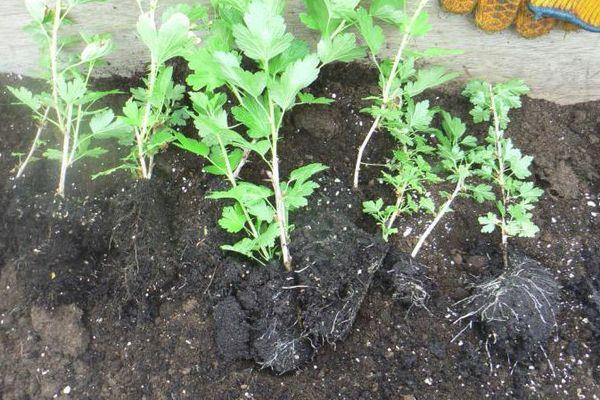
It is better to plant gooseberries in medium loamy light soil, since the root system develops quickly in it. However, some gardeners do not have this opportunity, and they have to grow berries in heavy clay soil. In this case, you will have to add sand and clay to it. With an increased level of acidity, the site is fertilized with lime. 200-300 grams of substance are consumed per square meter.
Hole preparation
Gooseberries are planted in pre-dug round pits, the diameter of which is 50-60 centimeters. The depth of each hole should be about 10-15 centimeters. When digging a hole for shrubs, it is necessary to discard the underlying layer of soil in one direction, and the fertile one in the other.

Mineral dressings with fresh compost must be added to the dug hole. Also, the soil is mixed with potassium sulfate and superphosphate.
Selection of seedlings
It is necessary to familiarize yourself in advance with the recommendations for choosing seedlings for further planting in the garden. Experienced gardeners advise using two-year-old seedlings that have a developed root system. The length of each young bush should be at least 20 centimeters.
When selecting a seedling, pay attention to the surface of the leaves. They should not have dark spots or be covered with a white powdery coating. The plate should have a deep green color.
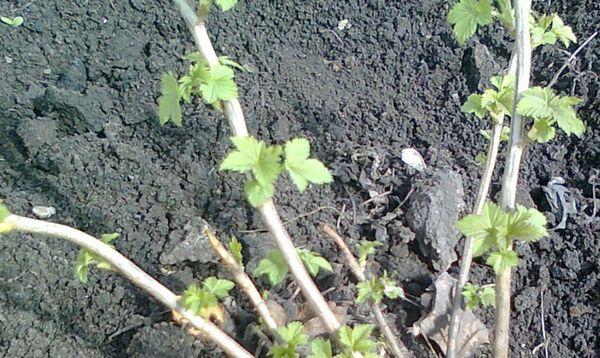
Planting seedlings
During planting, the selected seedlings are carefully placed in pre-dug holes. They are placed upright and buried 15 centimeters into the ground. Then the pits are covered with soil, tamped and watered.
Nuances of culture care
Thorny gooseberries must be properly cared for so that they bear fruit well.
Watering and fertilizing
Gooseberry Amber, like many other berries, must be watered regularly. The first watering is carried out immediately after planting the seedlings in the garden. Soil moistening is done 1-2 times a week in spring and summer. For irrigation, use warm water heated to room temperature.
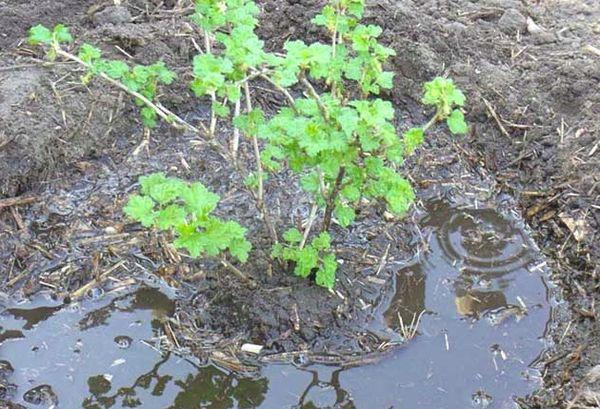
For feeding shrubs use:
- Potato peelings. When creating a feeding mixture, 700-800 grams of potato skins are soaked in boiling water. Then the mixture is cooled and poured under the roots.
- Biohumus. This mixture is used during the fruiting period. To prepare a solution in 10 liters of warm water, add a glass of vermicompost. Before use, the feeding composition is infused for 15-20 hours.
Pruning
When forming bushes, the classical method is most often used. In the first year of growing, all young stems are cut in half so that no more than five buds remain on them. The shoots located at the bottom are cut completely. Also, when pruning, they get rid of all branches that have begun to dry or grow inside the bush. They will never bear fruit and are therefore completely useless.
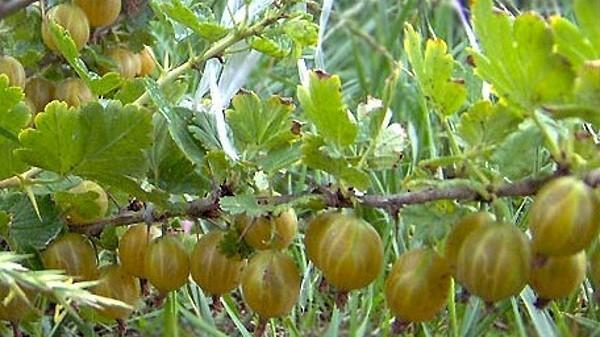
Pruning is carried out annually, at the end of April, when the first buds swell on the branches.
Strengthening the bushes and preparing them for wintering
Shrubs are prepared at the beginning of autumn, until frosts began. The site is cleared of fallen leaves and weeds, which are considered the main carriers of dangerous ailments. The soil under the bushes is carefully dug up and mixed with dressings. Experts advise using phosphorus-potassium mixtures. Nitrogen fertilizers cannot be used, as they may cause young stems to grow.
Measures for the prevention and control of pests and diseases
The amber gooseberry variety is sometimes infected with viral and bacterial diseases. Therefore, it is recommended that you familiarize yourself with the basic recommendations for the prevention of the development of such ailments.
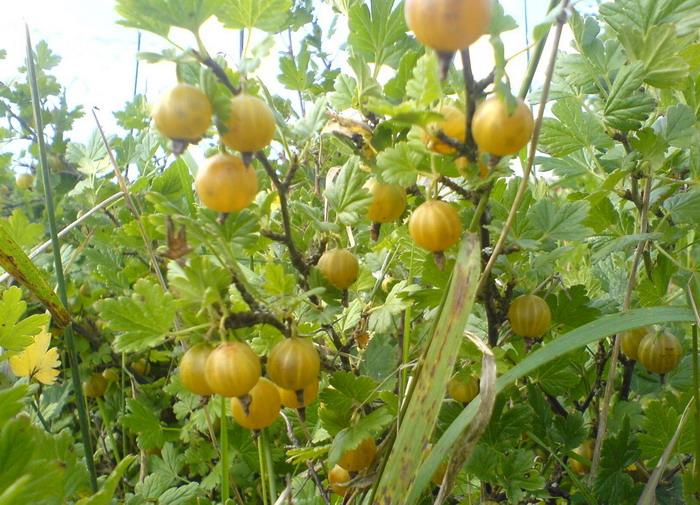
So that the bushes do not hurt, you must:
- comply with the basic agrotechnical rules for growing berries;
- regularly prune the stems so that the bushes are not too thick;
- periodically dig up the site;
- plant plants near the berries that would scare off dangerous insects;
- spray the bushes with boiling water to destroy pathogens of fungal infections;
- feed the bushes so that they do not suffer from a lack of nutrients.
Breeding varieties
There are various methods for propagating gooseberries, but most often they use vertical layering for this.
In March, old shoots are removed from the bushes, after which young branches are also shortened. Thanks to this pruning, young shoots will begin to appear quickly in the bushes. When their height reaches 10-15 centimeters, they are covered with fertilized soil. In the second half of July, the upper part of the shoots is pinched so that they take root. By the fall, the cuttings will firmly take root and can be transplanted to a new location.
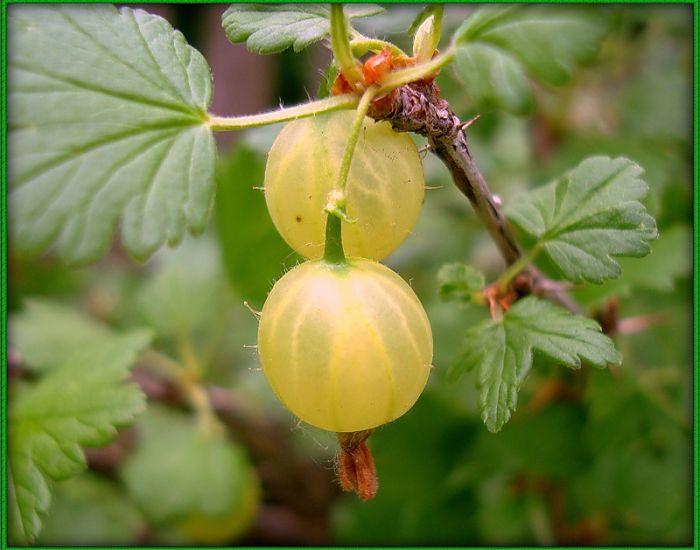
Collection and storage of berries
Most often they are harvested in July, but the Amber variety is considered early, and therefore its berries ripen a little earlier.
All berries ripen at the same time, due to which the collection of fruits is carried out only once. The harvested fruits do not last too long and must therefore be used immediately after harvest. Ripe berries can be stored at room temperature for 4-5 days. For the crop to be stored for 3-5 months, it will have to be placed in food containers and frozen.
Conclusion
Berry gardeners often plant Amber Gooseberries. Before purchasing such a variety, you should familiarize yourself with its characteristics and recommendations for planting, growing and harvesting.
